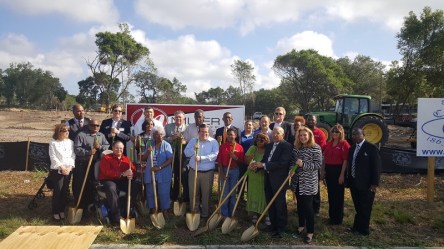In the face of crippling budget cuts, housing authorities rely on innovation, resourcefulness, and advanced software to stimulate growth. Carlos Pizarro serves as Vice President of Housing at Housing Authority of the City of Lakeland, Florida. His decade of experience in the private sector made him an unlikely candidate for the position. That experience, however, is the key to the housing authority’s success. “Public housing and section 8 must change,” reflects Pizarro. “It needs the private sector and the public sector to work together to create something new. I don’t see the government able to support Section 8 and public housing forever. There has to be an effort between everybody.” Such industry changes are felt across the nation. Fort Smith Housing Authority in Arkansas has managed to ride the waves of these changes under the guidance of Rachel Brown, Section 8 Director. “You can’t depend on public housing funding anymore,” Brown says. “Public housing is going away. A lot of us are focused on converting public housing into RAD.” Fort Smith Housing Authority demolished 170 of its public housing units. The 288 remaining units were converted to Rental Assistance Demonstration (RAD) units. RAD, per the U.S. Department of Housing and Urban Development, “allows public housing agencies to leverage public and private debt and equity in order to reinvest in the public housing stock.” The program is an effort to address a $25.6 billion dollar-backlog of public housing capital improvements. Blending funding options within a portfolio, and even within a single project, is one way that housing authorities stay afloat. Discovering untraditional sources of income is another. Innovative Incomes Both the City of Lakeland and Fort Smith housing authorities have created construction and development branches. “We got into developing properties, which is new for a housing...
LIHTC Update
Facing Tax Challenges
The Low Income Housing Tax Credit (LIHTC) program creates more than $8 billion per year to develop and rehabilitate affordable housing units. According to the United States Department of Housing and Urban Development, LIHTC is the most important resource for creating affordable housing in the United States today. More than 2.7 million affordable housing units have been developed over the past 30 years though LIHTC. However, there is uncertainty about the continued success of the program. Potential changes to income tax law are delaying affordable housing projects currently in development, and projects in the planning phase are suddenly challenged with budget shortfalls. History of LIHTC The LIHTC program was signed into law in 1987 and is monitored by the Internal Revenue Service. Housing finance agencies in all 50 states oversee the daily administration of the program. LIHTC differs from the approach the federal government takes towards other housing programs. Instead of using federal funds to build and manage housing resources across the county, the LIHTC program gives states, investors, and affordable housing advocates the ability to plan, finance and build projects that best fit their local needs. Nonprofit housing developers acquire tax credits from their state housing finance agencies based on a competitive process. States award credits to projects they deem most valuable based on pre-defined criteria. Awarded non-profits then turn around and sell tax credits to private investors such as banks and corporations. Those investors save on their annual tax bill and nonprofits raise capital to build housing. It’s a win-win for all. Future Uncertainty Because the sale of tax credits is a bidding process, prices are based on the need for investors to reduce their tax burden. If that need is reduced through tax reform, then there is less competition for tax...


